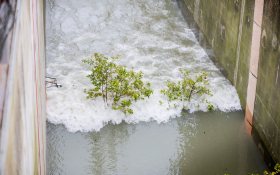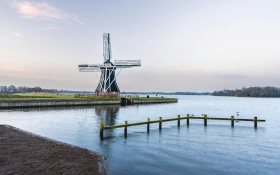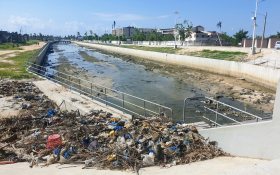Final countdown for clay-peat levee: slide failure to occur any moment
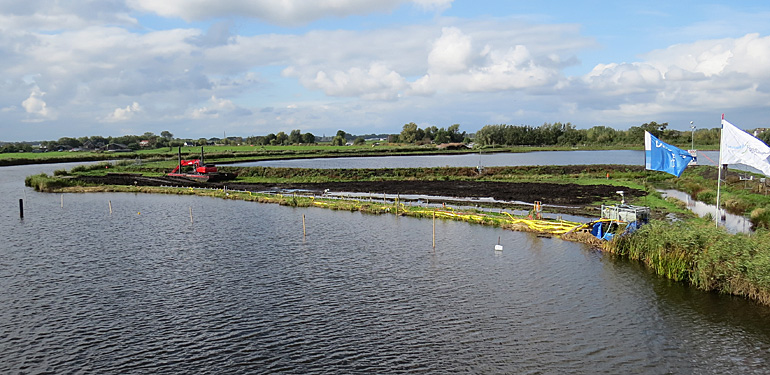
A Dutch levee is about to breach. On purpose. The clay-peat levee of the Leendert de Boerspolder, just south of Amsterdam, the Netherlands, is subjected to a stress test and the final countdown for the levee to break has started. Within a few days the inner slope is expected to slide away.
The test is to reveal the real strength of the 500 years old levee of clay that rests on a peat layer. A few weeks ago the levee has been fully saturated and now a ditch is being excavated at its toe.
Every day the ditch is excavated a little deeper and the levee is expected to slide away any moment now. Newly developed monitoring equipment is in place to determine the circumstances that lead to the final breach.
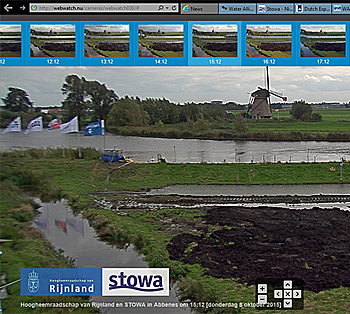 The break down can be followed on live stream.
The break down can be followed on live stream.
On livestream
The stress test has been set up by regional water authority Hoogheemraadschap van Rijnland, owner of the levee, and Stowa, the joint research institute of all Dutch regional water authorities.
Participating in the test is the foundation Flood Control IJkdijk that represents a number of companies specialized in levee monitoring.
This includes three companies with monitoring equipment: Intech, StabiAlert and Miramap.
The fourth company is HKV that developed a dashboard to provide real time aggregated data.
So far the levee behaves as expected. The stress test can be followed on a live stream.
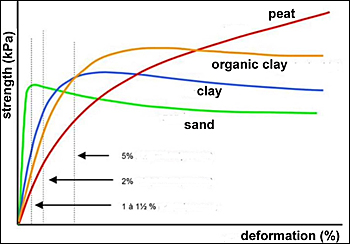 When deformed, peat soil maintains its strength longer than other soil types.
When deformed, peat soil maintains its strength longer than other soil types.
Verifying strength calculations
The stress test is to verify the current set of rules that is used by Dutch levees authorities to calculate the required strength of levees that are built on peat.
Many inland levees in the Netherlands have been constructed on peat and the knowledge on the behaviour of such a layer is limited.
Peat is known for its ability to deform and maintaining its mechanical strength. Yet, little is known about the exact relation between deformation and strength.
Therefore several safety margins are included, when determining the required size of a clay-peat levee.
The stress test is primarily set up to clarify whether the safety margins are sufficient.
Additionally the outcome of the test is expected to reveal new insights on the deformation and strength of peat under extreme circumstances.
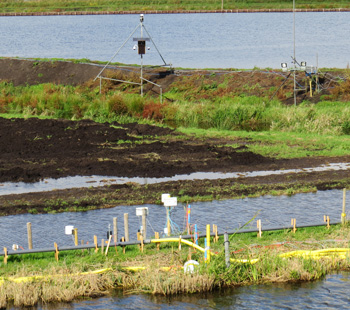 Sensor equipment that closely monitors the deformation of the levee.
Sensor equipment that closely monitors the deformation of the levee.
Four types of monitoring equipment
In recent years several Dutch companies have developed new instruments for the monitoring of levees. These instruments have been applied for the first time at the special facility IJkdijk for testing levee failures.
Several companies took the opportunity to test their new monitoring instruments to measure the deformation of the levee under real circumstances.
These companies include Miramap (soil moisture), Intech (3D laser), StabiAlert (inclinometers) and HKV (dashboard).
Technical University of Delft is present with an instrument to monitor the deformation with ground-based stereophotography.
Watch the countdown at live stream: stress test Leendert de Boerspolder.
Watch the dashboard with the aggregated realtime data: Dash board HKV/Floodcontrol IJkdijk.
Below a 3D laserscan of the levee by Intech (green = no movement, yellow = very little movement, red = serious movement).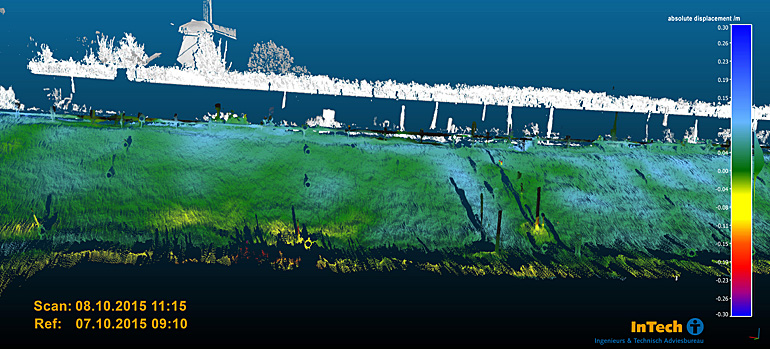
Read also on this website
● New tests IJkdijk: dike breaches predictable with new sensor systems, 13 September 2012
● Deltares to supervise new all-in-one sensor experiment in full scale test embankment Ijdijk, 21 May 2012
● Project: LiveDike Eemshaven
More information
Stowa
Utrecht, the Netherlands
+31 33 460 32 00
www.stowa.nl/english
FloodControl IJkdijk
Leek, the Netherlands
+31 594 55 50 50
www.floodcontrolijkdijk.nl/en
Hoogheemraadschap van Rijnland
Leiden, the Netherlands
+31 71 306 30 63
www.rijnland.net

